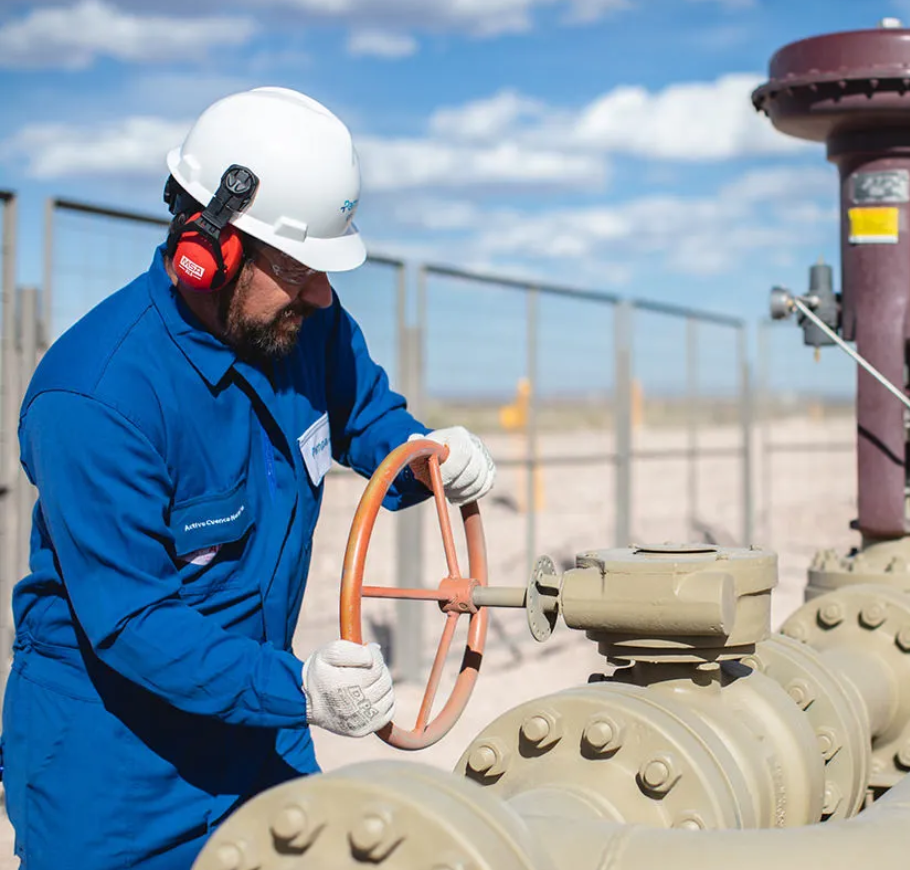Prevention intervention: Using predictive models to detect anomalies in gas turbine compressors
Pampa Energía or Pampa Energy, is an Argentine company based in the city of Buenos Aires, founded in 2005. It is one of the most important companies in the Argentine energy sector, participating in both the generation and transmission of electrical energy as well as the production and transportation of natural gas.
It participates in 12% of electricity generation, 85% of electricity transmission in the Argentine national territory, as well as 6% of production (including an important part of the surface of the Vaca Muerta deposit) and 60% of transportation of natural gas.
The company is listed on Argentine Stock Exchanges and Markets, being one of the Argentine companies with the highest weighting in the Merval (7.1809% as of January 1, 2019) and MSCI Argentina (10.77% as of January 31, 2019) indices. 2019). It has a Level II American Depositary Share (ADS) program, admitted to listing on the New York Stock Exchange and each ADS represents 25 common shares.


At 00:30 on August 14, 2018, plant operators at Pampa Energía Genelba Thermal Power detected a radical change in internal vibrations in a compressor bearing housing. The speed in the 17-stage gas turbine unit increased from 2.1 mm per second to 2.8 mm per second and the power decreased by 0.5 MW. While this behavior was unusual, an alarm did not appear in the control system.
After shutting down they shut down the unit to perform a full inspection of the compressor and turbine sections, finding that the inner ring material of stage 14 was damaged, and on the verge of collapse.
Not only did the experience prevent the asset from failing, the company avoided a $7 million repair bill.
Pampa Energía was lucky that the anomaly was captured, but the absence of any alarm from the control system was worrying.
Instead of relying solely on operators to prevent catastrophes, Pampa Energía decided to use PI System data to create a predictive maintenance algorithm to detect deviations and take preventive measures.
Efficiency calculations using PI System data
As a first step, the process team analyzed PI System data before and after the bearing vibration step change incident. Root cause analysis identified a slight, yet irreversible decrease in compressor efficiency two days before the operator found the fault. Isentropic efficiency of a compressor is defined as a ratio of energy that would be transmitted in an ideal process to the energy supplied in a real process. At the time of the failure, Pampa Energia didn’t have an online isentropic calculation for the compressor. However, even if they had the calculation, it would not have detected the failure in advance because the decrease was only 0.4%.
Next, the team built the online efficiency calculation using PI Explorer and analytics. They then performed a backfill for all of 2018 using PI System data to ensure it detected performance anomalies. This allowed Pampa Energia to calculate efficiency values and develop parameters. Next, they built predictive models in Python and Panda and trained them using PI System data. They enlisted polynomial features and multivariable linear regression models to calculate efficiency based on active power, compressor inlet temperature, and inlet pressure.
The resulting graphs showed calculated-versus-predicted efficiency, any correlation between the two variables, and unit temperature and pressure.
Upon analysis, they discovered that the model coincided with the calculations in the days before the failure occurred. However, after the failure, the calculated efficiency decreased, departing from original model’s calculations. “So the next question is: how can we capitalize on what we have learned, and what can we do so that a failure of this type does not happen again?” said Walter Adad, process engineer at Pampa Energia. “The answer is PI.”
Goals
- Create a predictive maintenance algorithm to detect deviations. Alert operators to issues to enable them to take preventative action prior to a major event occurring.
Challenges
- The control system could not detect anomalies in gas turbine compressors before catastrophic failure.
Solutions
- AVEVA™ PI System™
Results
- Quickly identified potential issues, performed necessary maintenance, and avoided massive
- expenses associated with asset breakdown.
- Given the success of the project, the company is working to leverage these predictions for its other critical assets.
“So the next question is: how can we capitalize on what we have learned, and what can we do so that a failure of this type does not happen again? The answer is PI System.”
Walter Adad - Process Engineer at Pampa Energía

¿Querés contactar con un especialista?
